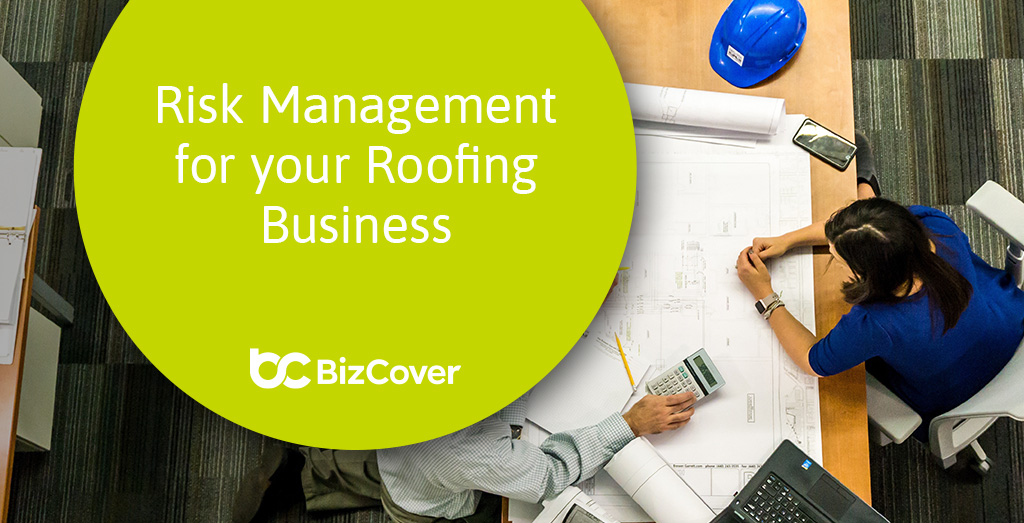Top 5 risk management tips for your roofing business
As with all businesses, roofing businesses are exposed to risk, both internally and externally. Regardless of the size and reach of your roofing business, risks exist; it simply comes with the territory when running your own roofing business. These risks can include everything from operational and organisational risks to financial, strategic, safety, employee, and reputational risk.
No matter how large or small your roofing business is, its long-term success may, in part, come down to your risk management for roofers strategy and how well you reduce your exposure to risk. Indeed, reducing your risks will help you improve your roofing business.
What are some of the main risks facing your roofing business?
Roofing business risks can be grouped into two defined categories: internal risks, and external risks. Let’s take a closer look at each.
External risks to your roofing business
External risks are defined as any risk factors that threaten your roofing business from the outside that you simply cannot reliably predict or control with a high level of accuracy. Examples of external risks include:
- an economic downturn.
- interest rates rising.
- natural disasters.
- industry disruption.
Internal risks to your roofing business
Internal risks are any risk factors that come from within your roofing business during standard business operations. Due to their nature and source, internal risks are easier to predict, pre-empt, and mitigate. Examples of internal risks include:
- outdated business operating systems and processes (including training).
- ineffective management.
- reduced production.
- ineffective organisational structure.
The five-step process for reducing risk to your roofing business
Step 1: Identifying the risk
Step one is arguably the most important step in your risk management plan for your roofing business – because if you can’t see the risks, then you can’t create strategies for reducing their chances of occurring. In identifying the risks to your roofing operation, you will examine the various types of risk your business could be subject to. The risks can be grouped into four categories:
- indirect losses;
- direct losses;
- liability losses; and
- injury to staff members.
Step 2: Analysing the risk
In step two you will estimate the loss potential and broader impact of the risk to your business, should it occur. This involves assessing each risk and determining
its impact on your business from both a profitability, reputational, and safety perspective.
Your direct costs can be relatively simple to predict. However indirect costs or losses can be a little harder to predict and measure. As such, it may be worth discussing this point with a business expert, like a business advisor or an accountant.
Step 3: Creating your roofing business risk management strategy
To create a risk management strategy for your roofing business, first conduct a company-wide risk assessment to audit and determine the most effective and efficient strategies for managing your roofing business risks. This may include staff training and periodical safety audits to help you manage and control your business risks.
Once you have defined, planned, and implemented these practical pre-emptive measures, you may want to include risk transfer measures in your business risk management strategy. Risk transfer refers to when one party takes on the risk of loss from another party by payment or agreement.
Risk transfer can be direct or indirect and may occur before or after the loss event. Common methods of risk transfer for roofing businesses include negotiation with suppliers, contract provisions that provide compensation, and roofer insurance.
Step 4: Implementation your new risk management strategy
When rolling out your risk management strategy in your roofing business, you may manage it yourself, or designate a senior leader of your team to become your risk management officer. This individual will work with you to develop and execute the risk management strategy for your business.
Step 5: See it through
Once your risk management strategy has been rolled out, closely monitor its effectiveness. It’s also good practice to periodically review the effectiveness of your strategy and make adjustments as needed or when your circumstances change.
As a busy roofing business owner, you are constantly on the move from one job site to the next. However, as a small business owner it’s important to take care of business ownership essentials such as business insurance*, including Public Liability Insurance and roofer insurance. Get your business insurance sorted quickly and easily online or by calling us on us on 1300 920 864.
This information is general only and does not take into account your objectives, financial situation or needs. It should not be relied upon as advice. As with any insurance, cover will be subject to the terms, conditions and exclusions contained in the policy wording. © 2025 BizCover Limited.





